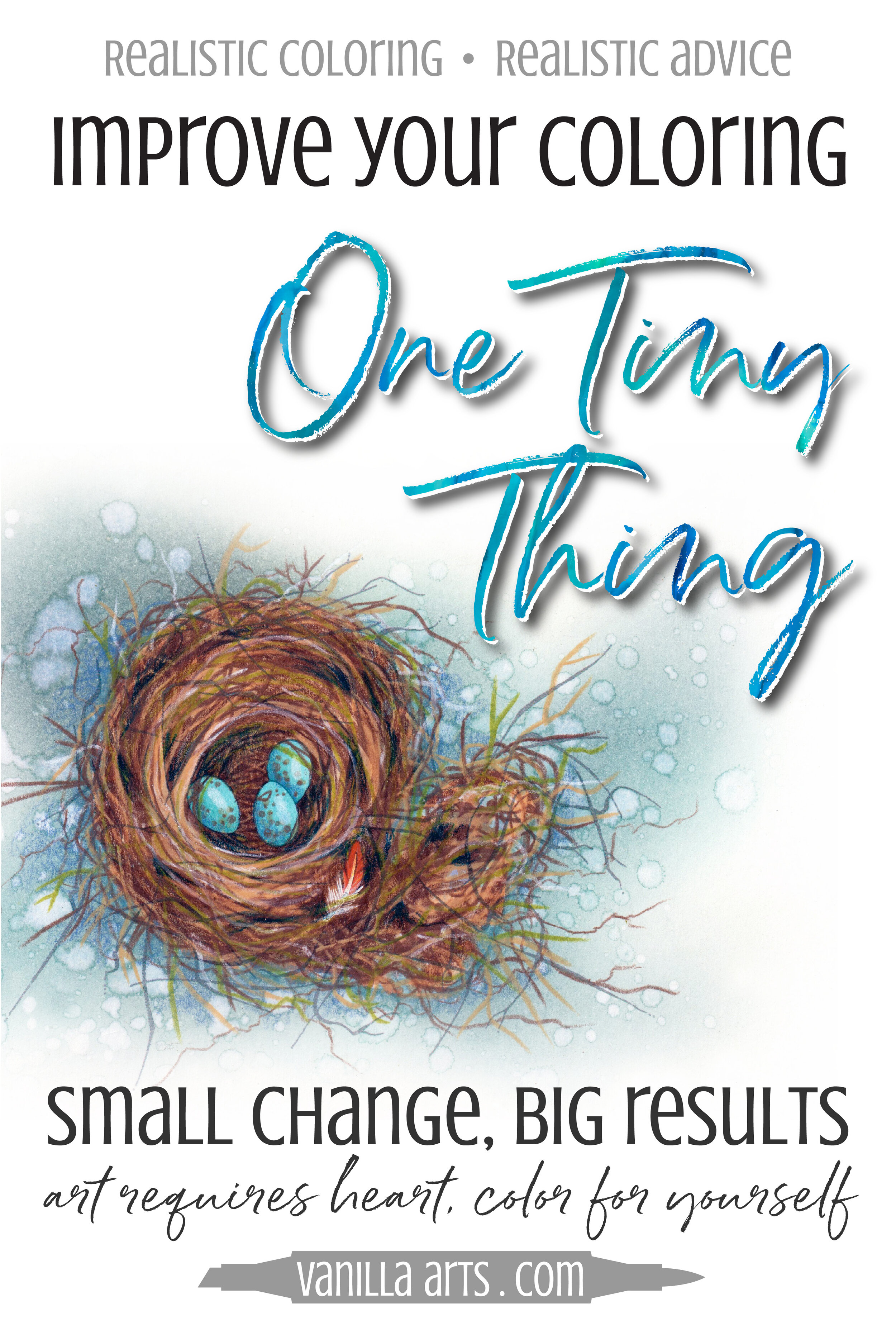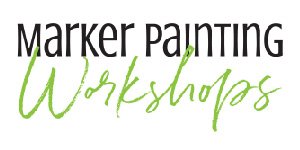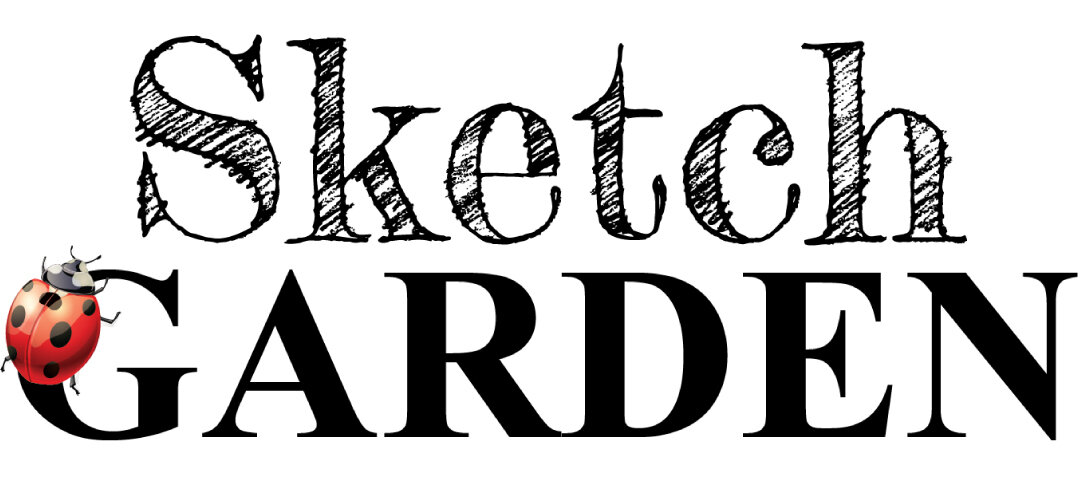Coloring that takes your breath away...
Think back to the last coloring project that knocked your socks off.
Maybe you spied it in a shop on the "Upcoming Classes" bulletin board. Perhaps you scrolled past it on Pinterest and had to abruptly backtrack to get a closer look.
When I ask students "what was it about the project which drew your attention?" they usually tell me it was color.
Color. Color. Color. Color.
People who love Copics and colored pencils all looooooove color.
Color. Color. Color. Love. Love. Love.
All good coloring students have been trained to say they love color.
"Hello, my name is B1GCulorLVR and I'm a color addict..."
It's a point of pride, a mark of belonging. Coloring people love to love color.
And maybe color is what initially attracts our attention to a few projects; but for the most part, pretty color is no big whoop. We see pretty color all the time, every day and everywhere.
If you were as addicted to color as you claim, you'd never get anything done. You'd spend hours gazing at the beauty of the blue toothpaste on your red toothbrush and zone out in meetings over the rhapsody of your boss' plaid necktie.
Color may grab your initial attention but that's not what holds it.
The quest for realism
Last week I talked about depth and dimension, how they're fool's gold when it comes to coloring better and with more realism. Be sure to read that article here-
Why depth & dimension aren't enough for realism.
In that article, I gave you a list of things which together add up to greater realism in your coloring projects.
To color with greater realism, you need to capture all of these elements:
texture
desaturation
environment
relationship
rationality
If you want to capture realism, you need to pay attention and incorporate all of these concepts.
Did you see that color palette selection isn't on the list?
Did you note that blending combinations aren't there either?
And notice that I didn't say a darned thing about light sources?
Get the idea that your coloring class is studying the wrong stuff?
Texture is a vital key to realism
I know, you took a class once about texture.
You used colorless blender solution on a washcloth to make a teddy bear look curly and kinda-sorta-maybe almost furry.
You used short little flick strokes to make Santa's beard look fluffy... well... his beard looked fluffier than his boots did.
You used a white gel pen to add highlight hairs to a doe-eyed girl with long flowing locks. And if you squint a lot, the white streaks kinda looked like highlights.
So you're a pro at texture now, right?
Uhm, not so much.
Basically, you took regular old ho-hum standard marker coloring and added a few swishes of something weird.
You used a novelty technique.
And it was only good for that one kind of thing. Teddy bears, old man beards, really odd shaped girls whose tiny little necks can't possibly hold up such gigantic heads.
That's not real texture and it's not going to get you closer to realism.
What's missing?
Thought.
Thought is what's missing from your dabbles with texture.
You're not stopping to think about what you're coloring.
I mean seriously, look around you. Right now. Scan the room around you. I'll bet you can't find one object in the room that doesn't have unique and specific texture to it.
Your computer has a smooth and glassy screen but the frame around it is slightly pebbled with a beveled edge. The pencil on your desk has a glossy paint job but there's one area that is a little matte from finger print wear and there are two bite marks down by the eraser. The desktop has a wood grain and there's a ring from your coffee yesterday and the far left corner is a little dusty.
If an object has a surface, that surface has a texture.
And I'll bet your class on advanced washcloth textures didn't mention that fact.
Novelty techniques can not solve your realism problems.
Artists who capture realism in their projects spend a lot of time thinking about the objects they're about to color.
And they spend that time thinking about the texture of the object, not the color.
Is it hard and matte? How do I convey that to my viewers?
Was it just plucked from the garden and still wet with dew? How do I demonstrate that?
Is it so fragile and lightweight that it might disintegrate if you touched it? How do I show that with my marker or pencil strokes?
Did you catch the word touch there?
Color may grab someone's initial attention but it's texture that captures our imagination. Texture makes people want to reach out and touch your coloring, it keeps us looking at and thinking about your project long after we've wandered away.
Real items have texture. Texture conveys realism and realism is far more impressive than a snazzy color palette or colorless blender tricks.
Not your average coloring class
There are a lot of talented and generous coloring instructors (both online and in shops around the world) who do a really great job educating students about basic marker and pencil techniques.
But there's also a weird merry-go-round mindset that says if you take enough classes and meet enough instructors- eventually, you'll grow your skills from coloring level to artist level.
So you bounce from instructor to instructor, technique to technique, spinning your wheels because no matter which class you take, you never move past beginner level concepts.
If every class only covers novelty techniques, you'll never move past novelty techniques.
There's a great big world beyond colorless blender tricks and that's where I want to take my students.
I have a growing Workshop full of online courses and lessons that are NOT swishy-swashy things to do with marker demonstrations
You've done depth. You've done dimension. You've explored the many uses of colorless blender and white gel pens.
It's time to make some art.























